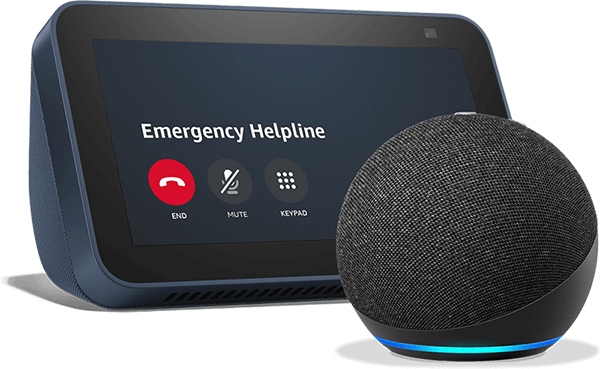
Being a caregiver is a role filled with responsibilities, challenges, and emotional ups and downs. It’s a journey that demands immense patience, compassion, and resilience. While caregivers are adept at managing the many tasks that come their way, tax season can introduce a unique set of complexities. Caregivers may have expenses or receive benefits that aren’t typical for the average taxpayer, and understanding how these play into tax preparation is crucial for maximizing returns. This tax prep checklist aims to assist caregivers in preparing for tax season and navigating this time efficiently.
Tax updates for 2023
The 2023 tax season brings certain adjustments that caregivers should keep in mind. While some of these changes affect all taxpayers, caregivers may find specific nuances that cater to their unique situation. To understand these updates, caregivers can refer to our detailed tax changes article, which offers an in-depth examination of each update.
Comprehensive checklist for caregivers’ tax filing
Gathering all the necessary information and documents before beginning the filing process will make for a much smoother experience. Below, we list what you’ll need to have on hand before you get started.
Personal details
Navigating tax season starts with gathering accurate personal details. You’ll need essential information like Social Security numbers and birthdates for yourself, any dependents, and especially the individual under your care.
Income documentation
W-2s from employers and 1099s from contract work or other income sources capture your yearly earnings and are pivotal for an accurate tax filing process.
Caregiver-specific deductions and credits
For caregivers, tax preparation involves not just standard tax considerations but also specific deductions and credits tailored to their unique circumstances. Gaining insight into these deductions can substantially optimize the return you receive.
As a caregiver, you might encounter various out-of-pocket expenditures, including medical expenses related to the cared-for individual. These can range from prescription medications to copays for doctor visits, medical equipment, and any therapy or specialist consultations. If you’ve invested in home modifications to cater to the needs of the person under your care, such as installing accessibility ramps or modifying bathrooms, these costs could be deductible.
Another area to pay attention to is assistance and services. If you’ve hired nursing assistants, therapists, or even part-time caregivers, these expenses can add up and potentially be deducted. Travel and transportation, such as driving to specialist appointments or even long trips for specialized treatments, are also crucial. Keeping a log of related mileage, parking fees, and other costs can be beneficial.
Additional tax documentation
Your previous year’s tax return can serve as an invaluable reference. It can shed light on any overlooked areas and helps ensure consistency in your filings. Moreover, if you’ve received any financial benefits or allowances due to your caregiving responsibilities, it’s essential to have the related documentation organized, whether in the form of statements or official letters.
Special tax credits or deductions some states offer to caregivers also require forms or documentation. It’s worth noting that if other family members share care costs, maintaining clear records detailing your contributions can be helpful.
Financial statements and investments
If you’ve set up any special accounts or trusts or manage the finances for the person under your care, bank and financial statements are crucial. They provide a comprehensive view of income, medical expenses, or other deductible costs.
End-of-year statements for investments or retirement accounts show dividends, interest, or contributions that might affect your tax return. As you gather these documents, remember that while our focus here is caregiver-centric, all other standard tax-related documents, like mortgage interest and education-related expenses, should also be in order if they pertain to your financial situation.
Timeline for tax preparation
Planning and sticking to a schedule can ensure that you’re not doing any last-minute scrambling to prepare your tax return. See our suggested timeline below to help you with planning.
Early January
- Kick off the New Year prepared: As the New Year dawns, it’s a great time to set up a dedicated folder or digital space to collect and organize all tax-related documents you will receive or generate in the upcoming weeks. It’s helpful to have everything in one place when you begin the filing process.
- Review last year’s return: Look back at your previous year’s tax return. It will give you a clear picture of the categories and types of income, deductions, and credits you claimed, helping you anticipate what you’ll need for the current year.
Mid- to late January
- Expect income documents: By the end of January, most employers send out W-2s and businesses usually send out 1099 forms. If you have other sources of income related to your caregiving duties, like payments received for care services, expect those documents around this time as well.
- Gather caregiver-specific documents: Start compiling receipts, bills, and other records of deductible caregiving expenses. Organizing them now will save you time later.
February
- Contact issuers of any missing document: If you haven’t received the expected W-2s or 1099s by mid-February, contact the issuer. It’s also a good time to contact financial institutions or care-related service providers to ask about any tax documents related to the person under your care.
- Begin organizing deductions: For caregivers, deductions can be vast, spanning from medical expenses to home modifications. Dedicate time to ensure you’re capturing all eligible expenses.
March
- Start the filing process: If you have all your documents in order, now is a good time to start your tax filing — whether you’re doing it yourself or hiring a professional. Having ample time to address any unforeseen challenges or questions is important.
- Address questions and uncertainties: Should you encounter uncertainties, especially related to caregiver-specific tax nuances, contact a tax professional or use IRS resources for clarity.
April
- Final review and submission: In early April, thoroughly review your tax return to ensure everything is in order, allowing you a buffer should you need to address any final issues.
- April 15: Ensure you file your taxes by this date to avoid penalties. If you believe you’ll need more time, you can file for an extension, but remember that an extension to file is not an extension to pay any taxes owed.
Post-tax season
- Documentation storage: Once you’ve filed your taxes, safely store all your documents. It is crucial to be able to access all your documents not just for potential audits but also as a reference for next year’s tax season.
- Midyear check: Around June or July, review any changes in your financial or caregiving situation that might impact your taxes for the next year. Staying ahead and planning better for the next tax season will ensure a smooth process.
Remember, while this timeline provides a structured approach, individual circumstances might require adjustments. Being proactive and starting early always helps in ensuring a smooth tax season.
Wrapping it up
Tax season can be overwhelming for everyone, but caregivers have a unique set of circumstances that make it even more challenging. Knowing what to prepare for, the proper steps to take, and the timeline to follow can make the process much easier. With the right knowledge, you can enter tax season with confidence.








